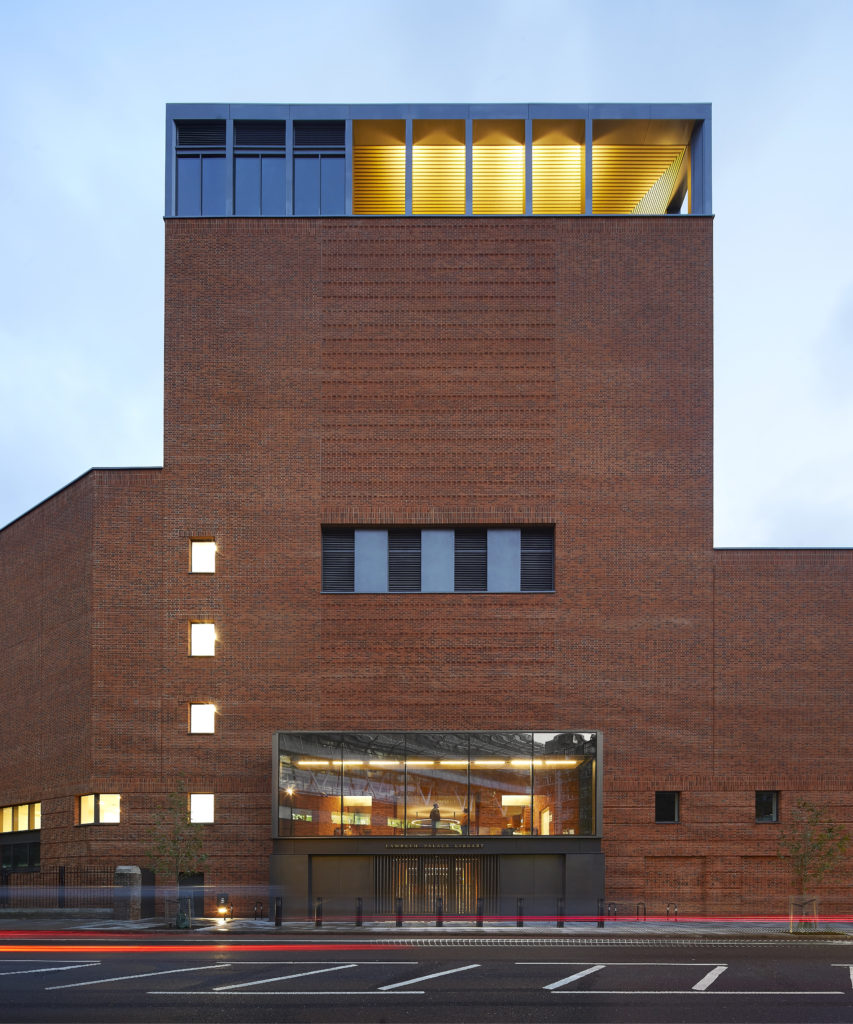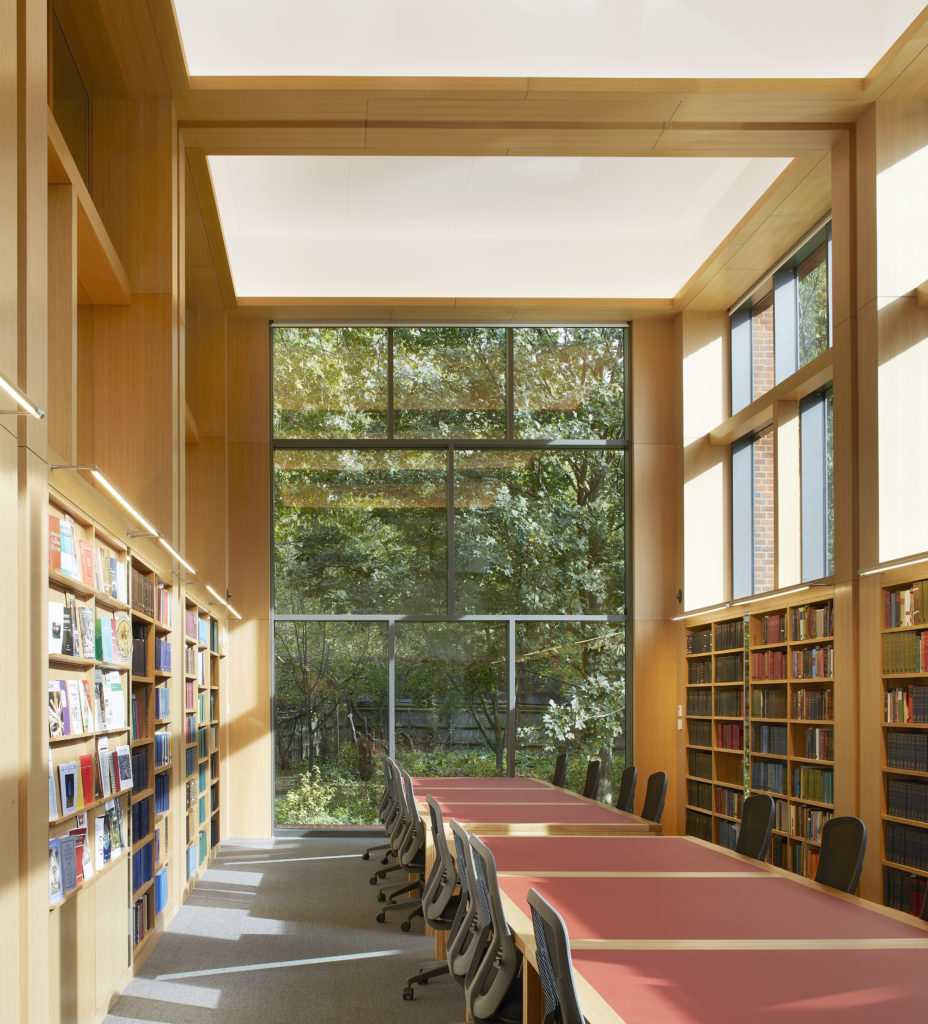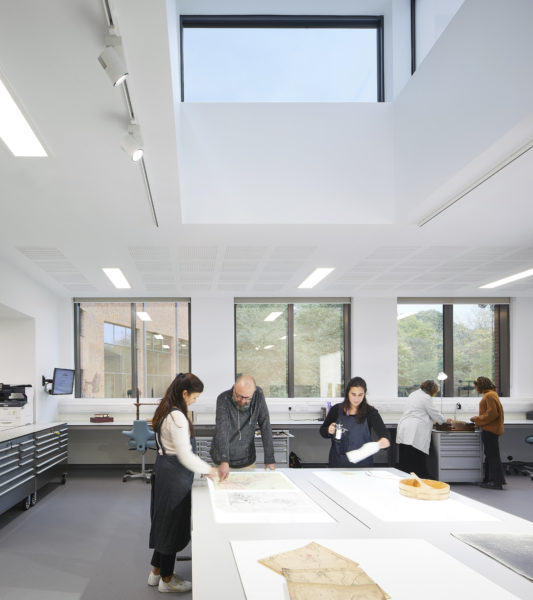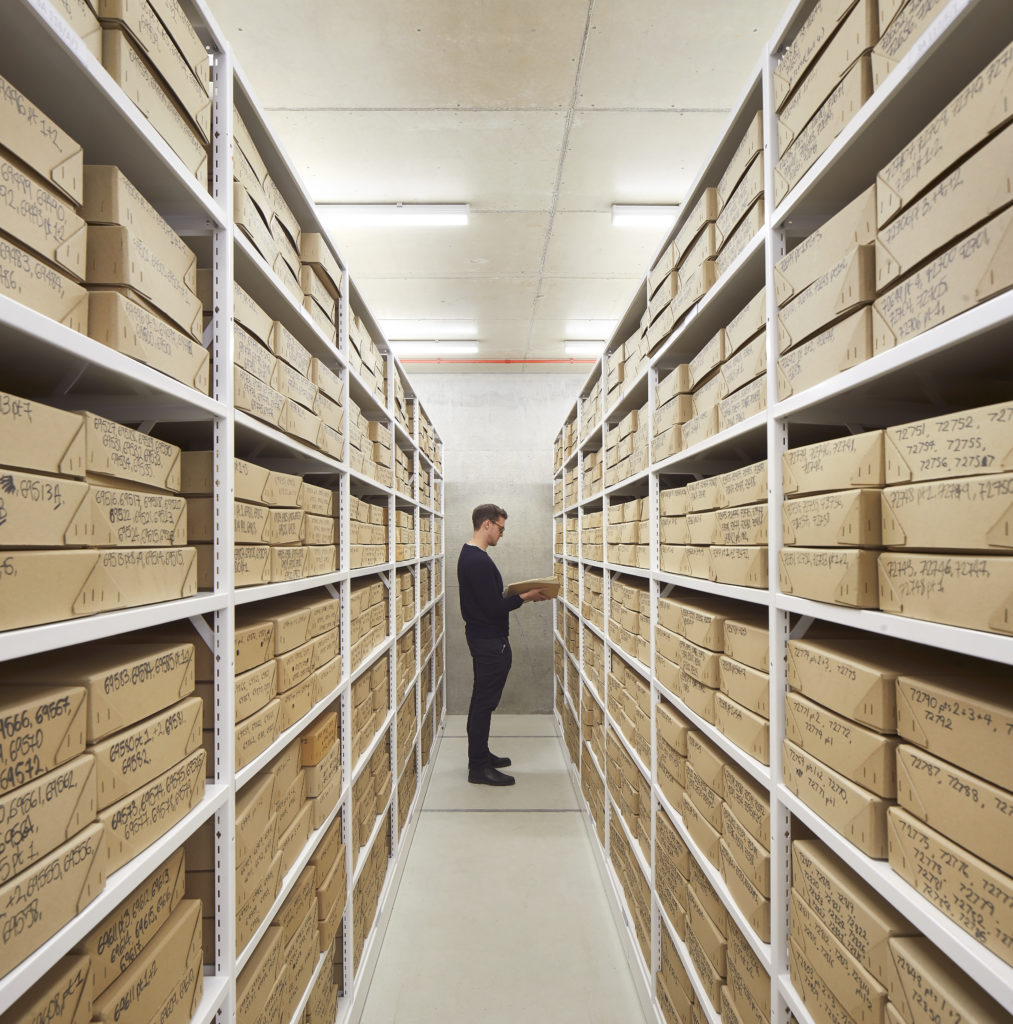Lambeth Palace Library, founded in 1610 and one of the earliest public libraries in the UK, has a purpose-built home for the first time, designed by Wright & Wright Architects. Completed in 2020, the new Library is a sensitive addition to the site of the Grade I listed Palace and is the first new building on the site for 185 years. The façade is designed in homage to the Tudor gate tower of the Palace and blends into the red brick perimeter wall of the gardens. Nestling amongst mature trees at the north end of the garden, the location preserves the collection’s historic link to the Palace, while increasing public access to the Library.


Facilities
Facilities for readers and the public have been improved greatly. The new reading room offers each reader generous space to work, and there is a dedicated readers’ lounge with kitchen facilities. The Library also includes group working areas and seminar rooms, plus the Bancroft Room and roof terrace, which delivers flexible event/lecture space with seating for up to 70 people. The new entrance hall is open to the public and contains interactive displays and exhibits from the collections.
Collections Care
Care for our internationally important collections is at the heart of the design. The new building replaces inadequate facilities in a warehouse in Bermondsey and cramped accommodation in thirteen separate rooms within Lambeth Palace, many of which lacked fire suppression and were difficult to control environmentally. By contrast, all stores in the new Library are temperature and humidity controlled and have fire suppression systems. As the Palace is on one of London’s many flood plains, the archive repositories are located above any potential flood risk. The building frame is designed so that the archive stores are as airtight as possible, and all air is filtered to prevent pollution damaging the books and archives. As the collections are continually growing, significant growth space has been included.


Environment and Sustainability
Lambeth Palace gardens are listed and are the oldest continuously cultivated gardens in London, dating from the twelfth century. The Library is designed to minimise the building’s impact on the grounds and to enhance the local ecology of the gardens. The new building takes up less than 3% of the area of the site and acts as a bulwark between the garden and Lambeth Palace Road, significantly reducing noise and air pollution in the garden. There is a new and enlarged pond and wetland glade and the area around the Library has been designed by award-winning landscape architect Dan Pearson Studio. All public spaces and the reading room benefit from carefully attuned natural light and have views across the enhanced gardens.
Care has been taken to make the building as sustainable as possible and it has achieved a BREEAM (Building Research Establishment Environmental Assessment Method) rating of ‘Excellent’. BREEAM is the world’s longest established method of assessing, rating, and certifying the sustainability of buildings.
The building is highly insulated and designed to minimise the amount of energy needed to keep the internal environment stable. Furthermore, on-site renewable energy provided by photovoltaic panels makes up almost half of the electricity that the building uses. The building has also been designed to reduce water use by at least 25%, by using water efficient toilets and hand basins. The pond harvests the run-off water from the rooftops and acts to attenuate and filter water through planting within the pond, before it enters the public drainage system at a slower rate. The Library is close to public transport links, is designed to support walking and cycling, and will add no new parking (except blue badge parking).
Facts & Figures
- 300,000 handmade bricks
- 3,800 cubic metres (or 4,970 cubic yards) of concrete
- Over 20,000 linear metres (or nearly 12.5 miles) of shelving
- 5,400 square metres (or 6,458 square yards) of floor space
- Reading Room for 12 readers
- Central tower rising to 9 storeys
Learn more
… a subtle, rewarding building and landscape, acknowledging its workaday function while enriching it as a place of study and of huge cultural and historical value.
Hugh Pearman, The RIBA Journal
… a heavenly new home for Lambeth Palace Library.
Michael Prodger, Apollo Magazine
a curious but compelling building …
Edwin Heathcote, Financial Times






